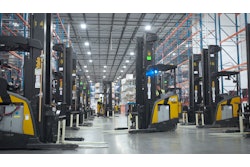
These days, the strain in clients’ voices when discussing their plans for peak season is loud and clear. Some are trying to ride things out as announcements on tariffs seem to occur regularly. Others are sitting on the sidelines, not sure if they should hire candidates for skilled positions. A growing group are making the tough decision to implement “voluntary time off” and have lost top performers as a result.
Will things level out with the approach of peak season? Unfortunately, no one has a crystal ball.
However, it’s safe to say that there are two likely scenarios. Scenario 1, that the economy improves and inflation eases in the coming months. Scenario 2 is that the economy remains soft or slows.
Regardless, now’s the time to create contingency plans for both scenarios. And here’s the good news – you probably have outlines for them already.
The COVID connection
There are a lot of things now that are mimicking the business experience from COVID, and much of the contingency planning that companies undertook in 2020 feels very similar. You likely have those plans saved somewhere, so pull them out, dust them off, and see what you can apply for the upcoming peak season.
The lessons learned during COVID can provide a framework for either economic scenario.
Scenario 1: If the economy improves
Be ready to hire top talent quickly. If you get any indication that your business is starting to pick up, go ahead and make those hires. Companies that are decisive are going to win the competition for the best talent.
Incorporate new ways to staff and schedule, including flex and gig. To staff up quickly, consider using flex and gig workers. Flex and gig solutions can help you tap into a pool of workers, such as caregivers, students, and retirees, who value flexibility above all else and want to work. If you need help adjusting schedules or connecting with talent, consider working with a staffing provider with proven gig and flex experience.
Make sure you’re competitive in your market. Don't expect to hire talent for sub-par wages. If the economy starts to improve, you may lose out on workers who won’t take a lower-than-market wage, putting you at risk as we move into peak season. Conduct a wage analysis for your market or partner with a staffing provider who can provide that information for you. If you’re less than competitive on wages, consider offering flexible schedules or gig assignments to win over the talent you need.
Scenario 2: If the economy remains the same or slows
Use downtime to move forward. During COVID, we saw many companies rework entire parts of their operation and become much more efficient as a result. They took advantage of the slowdown to make needed changes and came out much better for it.
Other things to add to your to-do list if the economy cools include:
· Review your onboarding and retention processes and identify opportunities to improve them
· Cross-train and upskill full-time workers to prepare them to take on new and updated roles in your organization.
· Investigate that new product line or piece of equipment you’ve been considering; there’s no better time for innovation.
If you must reduce your workforce, do so strategically. Have a plan for how you will reduce your workforce, shifts, or hours if it becomes necessary. Also create a contingency plan that allows you to expand or contract your workforce quickly, and explore options such as flex, temp, contract, or gig talent.
Ensure you’re ready to adapt to change (Scenarios 1 and 2)
The list below includes things you should determine now, regardless of what happens in the weeks leading up to peak season.
· Can your workforce scale up seamlessly and effectively?
· Do your technologies and processes efficiently meet business demand?
· Do you have sufficient resources for onboarding, security, timekeeping, and badging?
· Is your training content up-to-date and do you have trainers available?
· Have you stress-tested your onboarding process recently?
· Is your staffing plan for surge hiring current? Will you need a staffing partner’s help?
More tips for every peak season – and beyond
The new administration’s policy changes have forced many of us to rethink how we respond to change. Here are two things you should be doing now to prepare for a successful peak season.
Embrace new technology. Heading into peak season is not the best time to dive into all things AI with everything else on your plate. However, you should ask your workforce management or staffing provider if they offer AI-powered tools that you’re not using yet. In particular, you’ll want to know:
· Are they using AI to screen or match talent or for engagement tracking?
· Are you taking advantage of the full tech stack available under your current contract?
· Are there solutions that they offer that could help you improve efficiency or reduce costs?
Ensure your compliance and risk management strategy is airtight. Non-compliance can be a costly oversight, putting you at risk of fines, damage to your reputation, unfavorable media coverage, and lost productivity. And with joint employer liability, you can be charged with violations for hiring or using unauthorized workers, even if your staffing provider is the employer of record.
To protect yourself, ask for verification that the staffing provider completes Form I-9 for all workers. Better yet, look for a provider that also completes E-Verify to validate every Form I-9 and proactively monitors workforce status when policy changes are announced.
Key takeaways for peak season
To summarize, here are some of the things you should be doing now to prepare for peak season.
· Build two strategic staffing paths: one for growth and one for contraction.
· Revisit your internal systems and onboarding processes.
· Use downtime (if any) to improve processes, adopt flex models, and upskill your workforce.
· Ask your partners to support you with labor market insights, AI tools, and workforce compliance
· Be decisive and flexible – those who move first will win talent.

















![Pros To Know 2026 [color]](https://img.sdcexec.com/mindful/acbm/workspaces/default/uploads/2025/08/prostoknow-2026-color.mduFvhpgMk.png?ar=16%3A9&auto=format%2Ccompress&bg=fff&fill-color=fff&fit=fill&h=135&q=70&w=240)